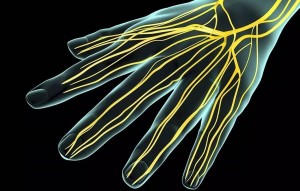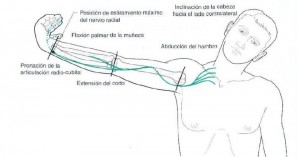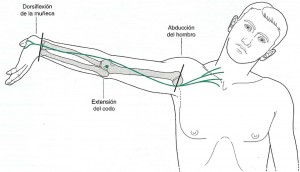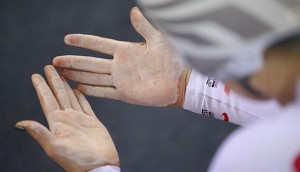Neurodynamics: simple exercises to prevent hand numbness while cycling
When cycling, and especially on long rides, one of the most common causes of discomfort is numbness in the hands. We change position now and, soon after, the sensation returns, so we try a new one, go back to the first one.... If the tingling does not really go away, it is likely that one of the 3 nerves that run through the arm and hand is involved. How to address the problem? There are several options, from checking the size of the bike and the posture you use to trying anatomical gloves and foam grips. But today we are going to talk to you about neurodynamics: some simple exercises that can help a lot to prevent your hands from numbness. If you suffer from this discomfort frequently and you have already tried everything against it, take note because this is of interest to you.

Neurodynamics: exercises to mobilize the nerves
The first thing to do is to check your posture or adjust the distance of the handlebars, as it is most likely that the numbness comes from there. We also recommend that you strengthen your core, because sometimes a deficit of strength in these muscles can have an influence.
But let's say you've done all this and it doesn't go away. It is possible that you have an irritated, compressed or pinched nerve. And, if we are talking about a medical problem, no matter how much you modify the geometry of the bike, you will achieve practically nothing. In this circumstance, the first thing you can do is to pay attention to the point where you feel the most tingling.
RECOMENDADO

What is heart rate variability and how does it affect the cyclist?

Change wheels if you want to transform your bike's behavior

What bike size do you need? Here's how to find out

How does age affect performance and recovery?

10 tips for safer and faster downhills on road bikes

The best gravel groupsets of the moment
According to experts, the radial nerve affects the thumb and the index and middle fingers, but not the palm. If you notice that your palm, thumb and those first fingers fall asleep, it may be the median nerve. This is responsible for the well-known carpal tunnel syndrome, whose symptoms include numbness. Less frequently, the cause lies in the third option, the ulnar nerve, which influences the palm and the little finger.

Three simple neurodynamic exercises
If what you have matches any of these descriptions, then you can employ a technique called neurodynamics, more popularly known as nerve stretching. These are simple routines that you can perform in your own home, and without the need for anything more than your body. Although, if what you have is indeed a physical problem, we recommend that you go to a professional physiotherapist, who can tell you precisely both the cause and the steps to take to solve it. In any case, always carry out these movements slowly and smoothly, to avoid greater evils.

Exercise 1: radial nerve
To stretch this, stand with your feet apart and your arms on either side of your body. Raise one of them about 20 degrees, keeping it straight, and turn the palm of your hand backwards. Leaving it like this, bring the arm to the position you see above, at 90 degrees to the body, tilt the head to the other side and lower it again. Do this slowly and smoothly. Perform 10 repetitions, then switch to the other arm and repeat.

Exercise 2: median nerve
Again with your feet apart, raise one arm to shoulder height; that is, at 90 degrees to the body. And place the hand with the palm facing upwards. Then, gradually bend the wrist until the fingers point downward, and gently tilt the head toward that arm. Then turn your wrist until your fingers are pointing upwards, while moving your head in the opposite direction, towards the opposite shoulder. Finally, return to the starting position. Remember to perform all these movements slowly. Perform 10 repetitions, then switch to the other arm and repeat.

Exercise 3: ulnar nerve
Raise one arm to shoulder height and bend your elbow 90 degrees with the palm facing your head. Once you have reached that position, tilt your head very gently to the opposite side, while flexing your wrist, until your fingers point towards you. Then, move your head slowly towards the raised arm, and your hand so that the fingers end up pointing in the opposite direction to the one they were in. Return to the starting position and perform 10 repetitions, then switch to the other arm and repeat.

How many times per day?
You may be wondering how many sets you should complete to notice an improvement in hand numbness on the bike. The truth is, as always with these types of things, there is no magic number that will assure you results. However, you can do 10 reps per arm up to three or four times per day.
That should help alleviate the sensation. But, if it doesn't, don't despair: consult a specialist who can guide you to find a solution to the problem.